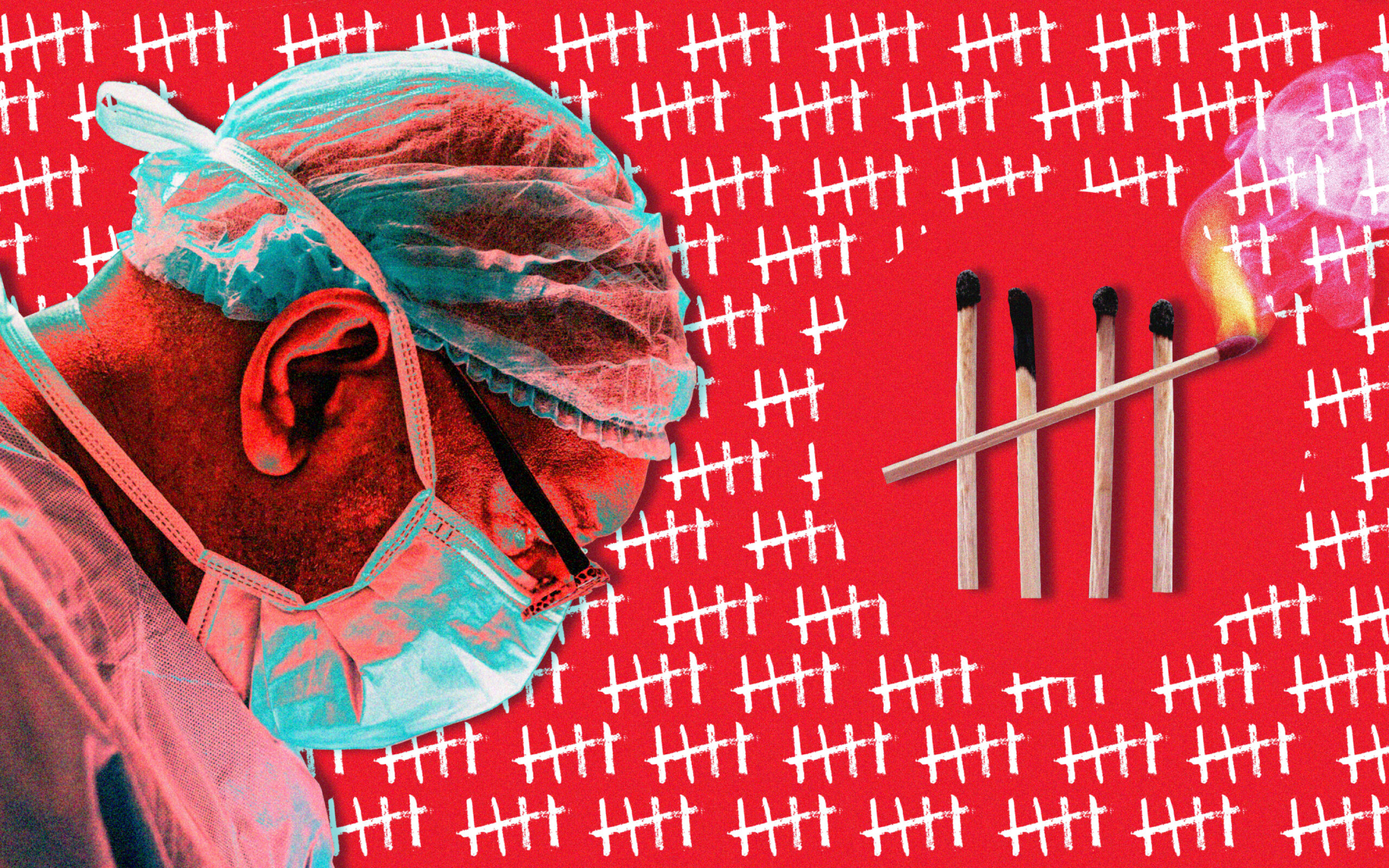We’re now 22 months into a pandemic that feels like it will never end. In December 2020, the FDA made vaccines available that can prevent the vast majority of COVID-19-related deaths. As Dr. Henry Miller, founding member of the FDA’s Biotechnology Office, and I recently wrote, a variety of COVID-19 treatments, including antivirals and vaccines, provide “a light at the end of the tunnel.”
Yet healthcare workers have described the fourth wave of the pandemic as a “never-ending nightmare.” Overcrowded ICUs, staff shortages, harassment, and violence against healthcare workers have intensified healthcare worker burnout—which was already a problem before the pandemic, but is getting worse as the pandemic continues. A well-recognized problem, medical burnout is “a long-term stress reaction marked by emotional exhaustion, depersonalization, and a lack of sense of personal accomplishment.”
While burnout’s never good, it’s especially concerning in a pandemic. “It’s not good for [healthcare workers’] mental health; it’s not good for the work environment. There’s increased chance for mistakes, medication errors,” Ernest Grant, president of the American Nurses Association, told NPR in October 2020.
Becker’s Hospital Review reports that 18 percent of healthcare workers have quit their jobs since February 2020. Furthermore, the world has lost many healthcare workers due to COVID—about 3,600 in the United States just in 2020. Healthcare workers, including nurses, are difficult to replace, so this has strained the already-overburdened healthcare system.
Harassment and violence against healthcare workers has also precipitated pandemic healthcare worker burnout. In an interview with Fortune, Dallas physician Dr. Stu Coffman described this violence. “A year ago, we’re health care heroes,” he said. “Now we’re being in some areas harassed and disbelieved and ridiculed for what we’re trying to do, which is just depressing and frustrating.” Healthcare workers face difficulties dealing with loved ones of declining COVID-19 patients who believe the disease isn’t real, harassment and even violence when reinforcing hospital rules on masks, pushback when discussing the importance of the COVID-19 vaccine, and anger about visiting rules in the pandemic, writes Fortune.
Furthermore, the harassment and violence goes far beyond the hospital to affect healthcare workers speaking about COVID-19 to the news media. As Nature writes, doctors and researchers who inform the public about the science of COVID-19 have received threats involving death or physical and sexual violence, trolling, and personal attacks that have affected their willingness to speak to the media in the future. Nearly 60 percent of scientists have experienced attacks on their credibility as a result of speaking about COVID-19 to the media or even just posting on social media.
Consequently, the pandemic has intensified medical burnout. Rob Fisher, MSN, MBA-HCM, RN, is nurse director of cardiology at a hospital in Massachusetts, where he leads over 100 staff members. He’s also founder of Top Content Consulting, a Search Engine Optimization content writing company. Unlike content writing, nursing is about life or death decisions on a daily basis.
In the pandemic, patients have overwhelmed medical systems. Fisher says, “Patients were crashing, respiratory-wise, way faster than we have ever previously seen worldwide. You just do not have the staff that are medically trained, whether it’s doctors, nurses, respiratory therapists, pharmacists, and other healthcare professionals, or the stock on the shelves with supplies to handle the volume daily for extended periods of time… that’s where burnout becomes real.” He says that his hospital is still at capacity 24/7, and though most patients do not have COVID, the “daily grind of needing support to take care of patients and families” has been overwhelming: “There’s just no letup in sight.”
Burnout was a problem long before the pandemic, even as the medical field seeks to make itself more livable. In 2019, The National Academies published a report on clinician burnout and ways to avoid it. Christine Cassel, Professor of Medicine at the University of California at San Francisco told The Washington Post in this October 2019 article about medical burnout: “It’s a moral issue, a patient-care issue and a financial issue,” she said.
From a moral standpoint, medical burnout is about the conditions under which healthcare staff works—and the resulting impacts on their lives. Long hours, conflicting demands between hospital executives and frontline healthcare workers, and more can make an already stressful job even more difficult. Furthermore, burnout can cause relationship problems for healthcare workers, contribute to substance abuse, and lead to mental health problems and even suicide, writes Dr. Stefan De Hert. A Canadian study conducted in the first few months of the pandemic found that over half of healthcare workers surveyed experienced burnout, and that over a third displayed symptoms of post-traumatic stress disorder (PTSD) and/or depression.
From a patient care viewpoint, burdening health care workers lowers the standard of care, worsening patient outcomes. Dr. De Hert writes that burnout reduces patient satisfaction with care, reduces quality of healthcare, and can increase medical errors, leading to costly malpractice suits and increased patient deaths. These effects are even more pronounced in the past year and a half, during which time healthcare workers have been overloaded by the pandemic. National Public Radio reports that, in the pandemic, many health care workers state that their feelings of burnout have directly affected patient care.
The financial aspect of burnout is complex and very costly. According to Harvard Business School, physician burnout costs the healthcare system $4.6 billion annually. One major cause of these costs is the loss of healthcare workers to resignation and suicide. Each doctor that leaves the workforce costs the hospital anywhere from $500,000 to $1 million, according to the American Medical Association. Malpractice resulting from substandard care due to burnout is also costly, not to mention the financial cost to patients who may have to seek a second opinion or additional medical care due to substandard care.
Medical burnout directly impacts our lives because it reduces the quality of medical care and leads to loss of healthcare workers. There are a few things we can do to reduce our impact on the healthcare system and help mitigate health care workers’ pandemic burnout. Getting the COVID-19 vaccine and using masking, social distancing, and hand washing to prevent coronavirus transmission is one step. Talking to our loved ones about the importance of these behaviors is another.
Beyond that, the first step to improving the healthcare system for its workers is awareness of the problem. “We as healthcare workers come to work daily to assist the needs and care of patients in the best possible way, but we need support and understanding as well,” Fisher says.
Fisher states that self-care can also help nurses avoid burnout: “Being able to do things you enjoy when you are off to avoid thinking about the daily grind of being in the hospital, whether it’s exercise, relaxing with family or friends, to decrease mental and physical exhaustion.” Self-care is good, but more action is needed, on a structural level, to help reduce medical burnout.
In his words: “The grind is daily. There’s no breaks… the burnout is real.”





